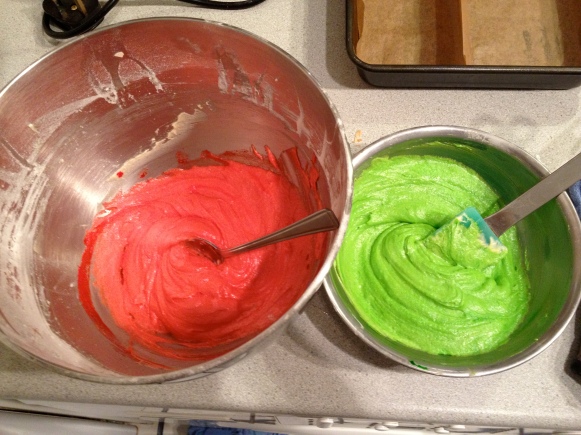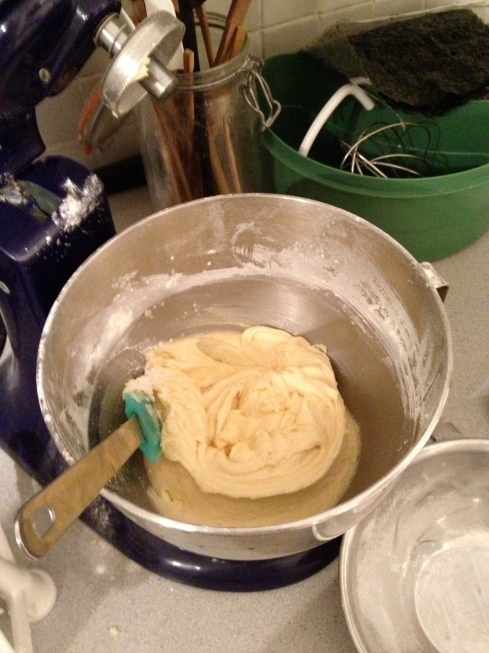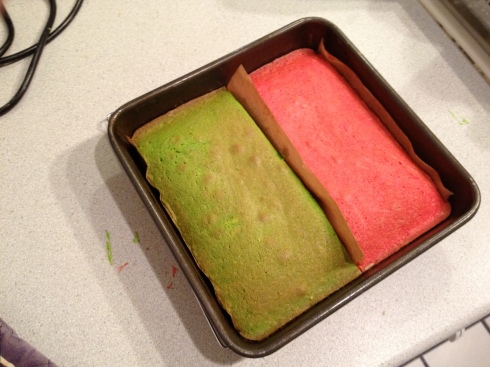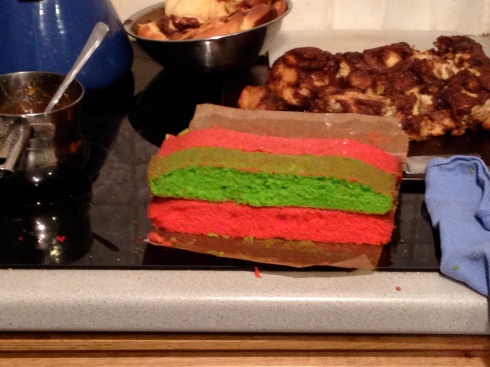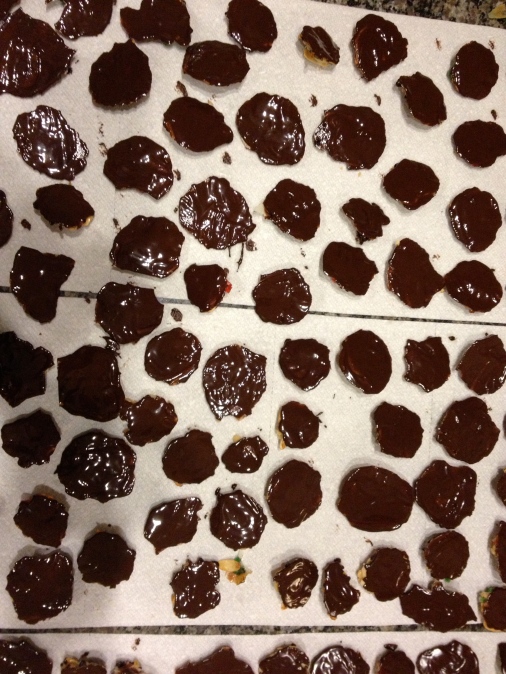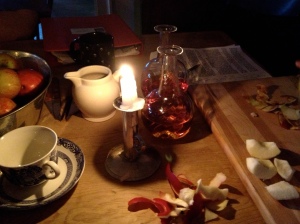
peeling applies for the mincemeat; the mess kitchen was lit only by the fire and candles, and as soon as we entered the years seemed to roll away
It’s been a grey, gloomy day all day in Toronto (the top of the CN tower was shrouded in mist) but I’ve been happily employed in the Fort York Officers’ Mess kitchen learning about 18th century mince pies. In fact it’s been pretty much the perfect day; what better way to get into the Christmas spirit than in a room lit only by the wood fire and candles, with a medley of mace, cloves and nutmeg filling the air and a reading of Hannah Glasse’s 1747 mince pie recipe, which brought the world of the 18th century Christmas kitchen to life?
The workshop was led by Mya Sangster, part of the indefatigable and dedicated Fort York historic cookery team, whose extensive knowledge and research of historic mince pie recipes includes some thirty or more recipes from the mid 16th century to the start of the 19th century. Mya guided us through the changing content of the mince pie, as its original format of meat with some dried fruits altered so that the fruit and sugar element began to dominate in the 1790s. She pointed out that many of the stories associated with mince pies (the three spices used in the mixture represented the three kings) may well have been wonderful Victorian inventions of tradition but what was clear is that these finely shredded minced meat pies have always been associated with Christmas. A fabulous bill of fare for December from The Whole Duty of a Woman (1739 ed.) includes both ‘minc’d pyes’ and ‘a turkey larded’. But Mya also explained that there were many versions of Lent mince pies, where the meat was replaced by eggs.

our mincemeat with some of Mya’s homemade preserved orange peel; this was cut into fine strips and added to the mincemeat for our small mince pies
Our Hannah Glasse recipe called for many ingredients that would have been familiar to all 18th century makers of mince pies. The meat element was a ‘neat’s tongue’, boiled over the fire of the mess kitchen until it was ready for me to peel. Mya had made her own preserved orange and citron peel. The real beef suet (I didn’t realise that suet was specifically the fat around the kidneys) had been purchased specially from the slaughter house so we had to break it up by hand before finely chopping it. Hannah’s recipe calls for half a hundred pippins but we were only making half quantities so we only had half this number of apples. Then there were raisins, currants, sugar (but not a lot, only 4oz for all of this) and a fair quantity of alcohol to bind it all together.
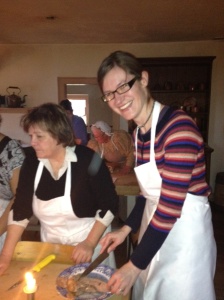
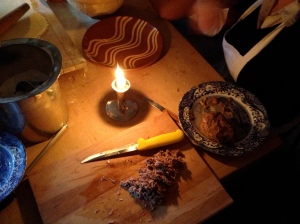
peeling and chopping the neat’s tongue
In the dim light of mess kitchen Mya and her wonderful assistants Rosemary, Kathryn and Elizabeth set us to work peeling, chopping and pounding. We made the mince pies in two formats. One large mince pie, following Hannah’s instructions for what she described as a ‘little Dish, something bigger then a Soop-plate’ and then some small mince pies, made in what Hannah might have known as ‘little Patties’. For the large mince pie which was baked in the kitchen’s wood fired bake oven, the contents were layered – meat, citron, mincemeat, orange peel and one layer of meat. For the smaller patties which were baked in the prep kitchen’s larger ovens, all the filling was mixed together.
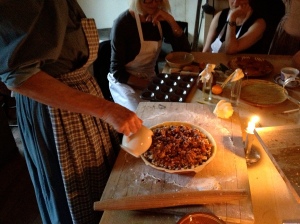 layering the large pie in its dish a little larger than a ‘soop plate’
layering the large pie in its dish a little larger than a ‘soop plate’
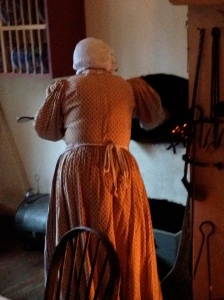
Kathryn puts the pie in the bake oven
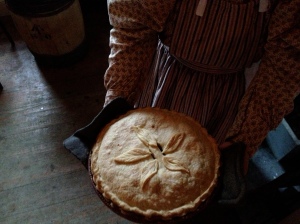
the baked and finished pie
Our work was fuelled by delicious pound cake, made by the historic cookery team, and a fabulous lunch of Mya’s Skeet root vegetable soup (accompanied by Elizabeth’s freshly made rolls and a wonderful selection of cheeses. Once the large mince pie was cooked we were able to try it with creamy ginger ice cream which Mya had made to a Nott recipe (author of The Cooks and Confectioners Dictionary, Or, The Accomplish’d Housewifes Companion). The rich, buttery pastry (also a Hannah recipe) was beautifully flaky and the spices and preserved peels really came through in the flavour of the filling.
There were so many elements of the day which really impressed me;
The team’s commitment to researching every element of historic cookery and using only authentic techniques, implements and ingredients. Of course the 21st century world means there were elements that were more challenging than others but whether it was waiting for Whole Foods to get a fresh supply of citron or only using a three-pronged fork to prick the tops of the pies because 18th century forks were three-pronged, it gave us a real sense of the whole experience of 18th century cooking. Nor would Mya make any alterations to the recipe, choosing one that it was possible to make with the ingredients available.
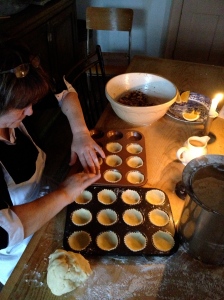
pastry for the small ‘patties’
The mess kitchen in which the workshop was held is part of the visitor’s tour at Fort York so and far from being shut off while we working visitors were encouraged to come in and learn more about what we were doing, while munching on a slice of pound cake. It was a great way of animating the kitchen and providing a natural springboard for interaction and questions.
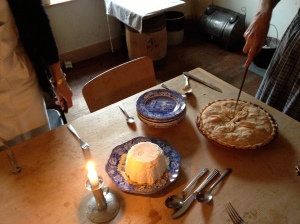
a chance to sample our work; the large mince pie with Mya’s Nott’s ginger ice cream
The small group size of eight people was perfect. We could all contribute to the making of the mincemeat, with knives and pestle in hand, while there was more than enough room in the prep kitchen’s ovens for eight trays of mince pies. It was great to meet a group of fellow historic food lovers who came from diverse backgrounds but were united by their fascination in the food and cooking of the past.
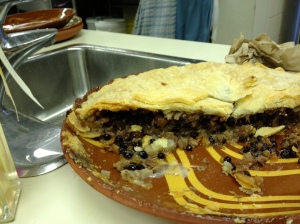
the mince pie filling; the layers of meat, mincemeat and candied fruit can’t easily be seen but could be easily tasted
I came home to our new, ultra modern apartment with the fruits of my 18th century labour for Mr Kim to sample. While they were still on the sweet side for his savoury palate I think that he was impressed by the use of real tongue and beef suet. With the tongue to boil up and the citron to locate it’s perhaps not a recipe I’d try regularly (although I’m very keen to make the pastry again) but as I look out over Toronto’s 21st century skyline I’m very pleased to have started off my advent season with the chance to come a little closer to the Christmas of the 18th century and to have been a part of such a great example of historic food interpretation.
Tags: bake oven, beef suet, citron, Fort York, Hannah Glasse, historic cooking, John Nott, mince pies, neat's tongue, suet
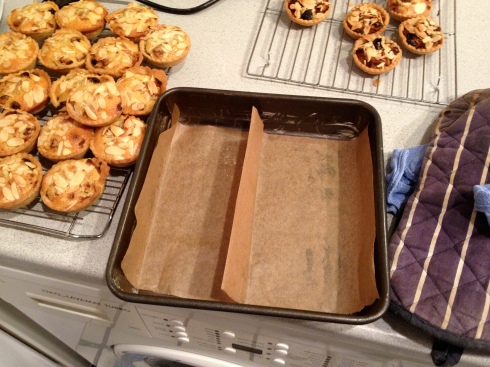 Setting up the baking tin to get two colours – the results of frangipani mince pie baking in the background
Setting up the baking tin to get two colours – the results of frangipani mince pie baking in the background